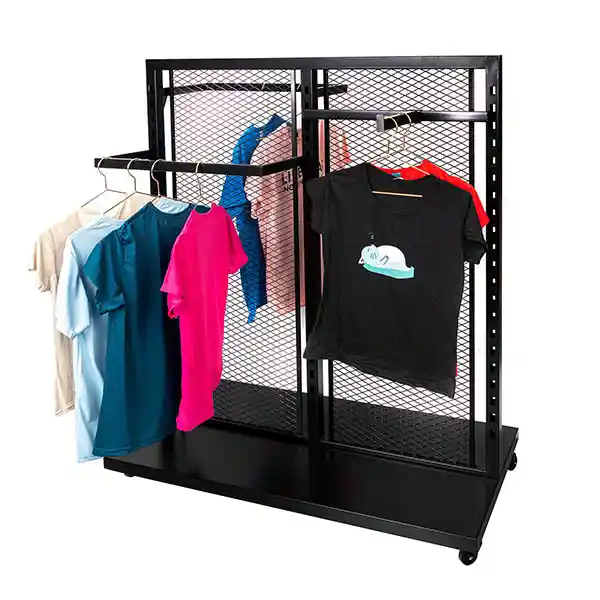Is Retail Dead? Solid Displays Don’t Think So!
In recent years, the question "Is retail dead?" has been a frequent topic of discussion. The rise of e-commerce, the fallout from the pandemic, and changing consumer behaviors have created challenges for the retail industry. However, declaring retail as dead is an oversimplification. Retail is not dying—it is evolving, and all the above challenges will or have already eventually become the driving force for this progress. Let’s examine this through multiple perspectives.

Before we examine this question, let’s first look at the difference between e-commerce and retail:
| Feature/Factior | E-commerce | Retail |
| Shopping Method | Online shopping, usually through websites or apps | In-store shopping, face-to-face interaction |
| Shopping Experience | Virtual shopping experience, can browse products but cannot touch or try them | Real, direct experience, customers can touch and try products |
| Convenience | Shop anytime, anywhere, 24/7 | Limited to store hours, customers must visit physically |
| Delivery Speed | Fast delivery, usually within a few days | Instant purchase and take-away products |
| Product Variety | Unlimited shelf space, wide range of products | Limited by store space, fewer product options |
| Interactivity | Online customer service, product reviews, and recommendation systems | Direct interaction with store staff for immediate help |
| Technology | Uses AI, AR, VR, personalized recommendations, and other advanced tools | Limited reliance on technology, mainly traditional shopping methods |
| Social Aspect | Little social interaction, shopping is independent | Frequent social interaction, customers may shop with friends or other shoppers |
| Price Advantage | Frequent discounts, promotions, and vouchers, transparent pricing, easy comparison | Prices affected by location and store operating costs, usually less flexible than e-commerce |
| In-Store Experience | No physical store, purely digital experience | Store layout, display, and decor create brand experience and atmosphere |
| Customer Relationship | Data-driven personalized recommendations and email marketing | Based on customer loyalty and long-term relationships, often focused on local clientele |
| Operating Costs | Relatively low, mainly for maintaining websites and logistics systems | Higher costs due to rent, employee salaries, inventory management, and store maintenance |
E-commerce: A Catalyst, Not a Competitor
The surge in online shopping has undoubtedly changed the landscape of retail. Platforms like Amazon, Walmart, and eBay have enabled businesses to reach global audiences, often leading to the misconception that brick-and-mortar stores are obsolete. However, e-commerce is not a competitor to retail but an extension of it. Many successful retailers have adopted omnichannel strategies, integrating online and offline experiences to cater to diverse consumer preferences. For instance, "click and collect" options and digital showrooms have proven that physical stores can coexist and thrive alongside online platforms.
The Resilience of In-Person Shopping
Despite the convenience of e-commerce, in-person shopping continues to hold a unique appeal. Retail stores offer tangible experiences that cannot be replicated online. The ability to see, touch, and try products is invaluable for certain industries, such as fashion, home goods, and electronics. Moreover, physical stores provide immediate gratification—a benefit online shopping cannot match. These elements make retail spaces not just points of sale but also destinations for discovery and engagement.
Retail as an Experience
Modern retail is increasingly about creating experiences rather than merely facilitating transactions. Retailers are investing in interactive and immersive store designs to captivate customers. Brands like Apple and IKEA have pioneered this trend, turning their offline stores into spaces where consumers can explore products in an engaging environment. Pop-up shops and experiential marketing campaigns further demonstrate how retail can innovate to attract foot traffic and foster brand loyalty.
The Role of Technology
Technology is a game-changer in the evolution of retail. Smart mirrors, augmented reality, and personalized recommendations are reshaping how consumers interact with brands. Additionally, data analytics allows retailers to understand customer preferences and tailor their offerings accordingly. Retailers who leverage these tools effectively are staying ahead of the curve and proving that technology enhances rather than replaces the retail experience.
Economic and Social Factors
Retail also plays a significant role in local economies and communities. Small businesses and local shops provide employment and contribute to the cultural fabric of neighborhoods. While large-scale closures of traditional retail chains have made headlines, many independent retailers have adapted creatively, offering unique products and services that resonate with their communities.
Conclusion
Retail is not dead; it is adapting to a rapidly changing world. By embracing technology, focusing on customer experience, and leveraging the strengths of both online and offline channels, the retail industry is positioning itself for a vibrant future. Challenges remain, but those willing to innovate and evolve will not only survive but thrive in this dynamic landscape. Solid Displays is such an innovative display stand customizer, and we will use our 15 years of experience in the industry to turn your needs into reality. Retail’s heartbeat is far from fading—it is beating stronger, albeit in new and exciting rhythms.
Related Posts:
What is the Display Stand for the Retail Industry?
How Effective Are Custom POP Displays in Retail?
8 Best Ways to Organize Retail Display in Your Store for 2024





